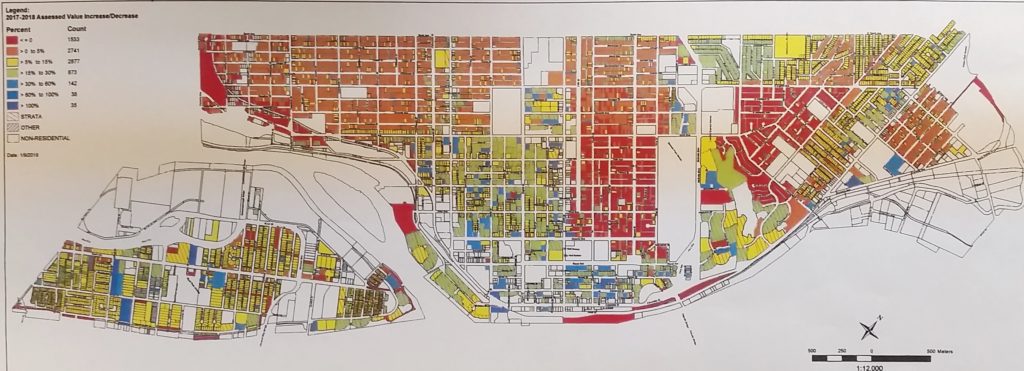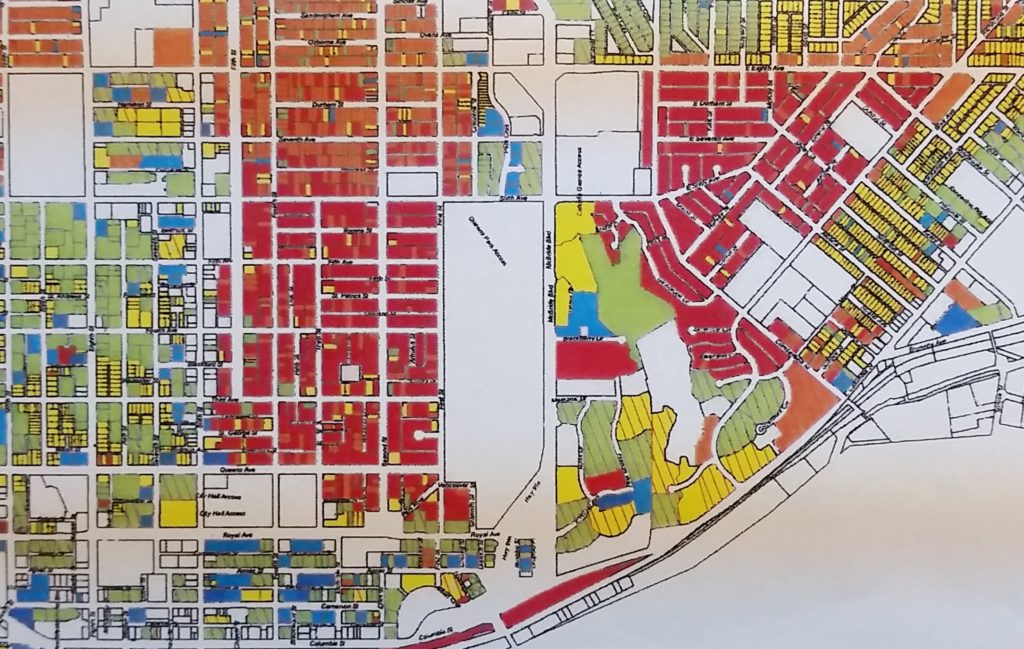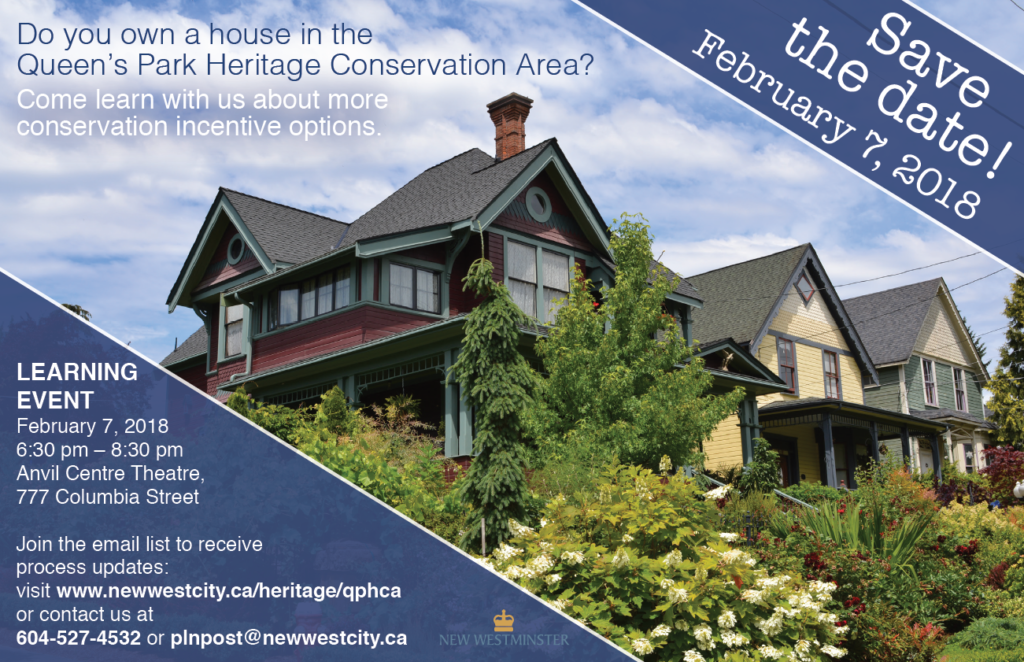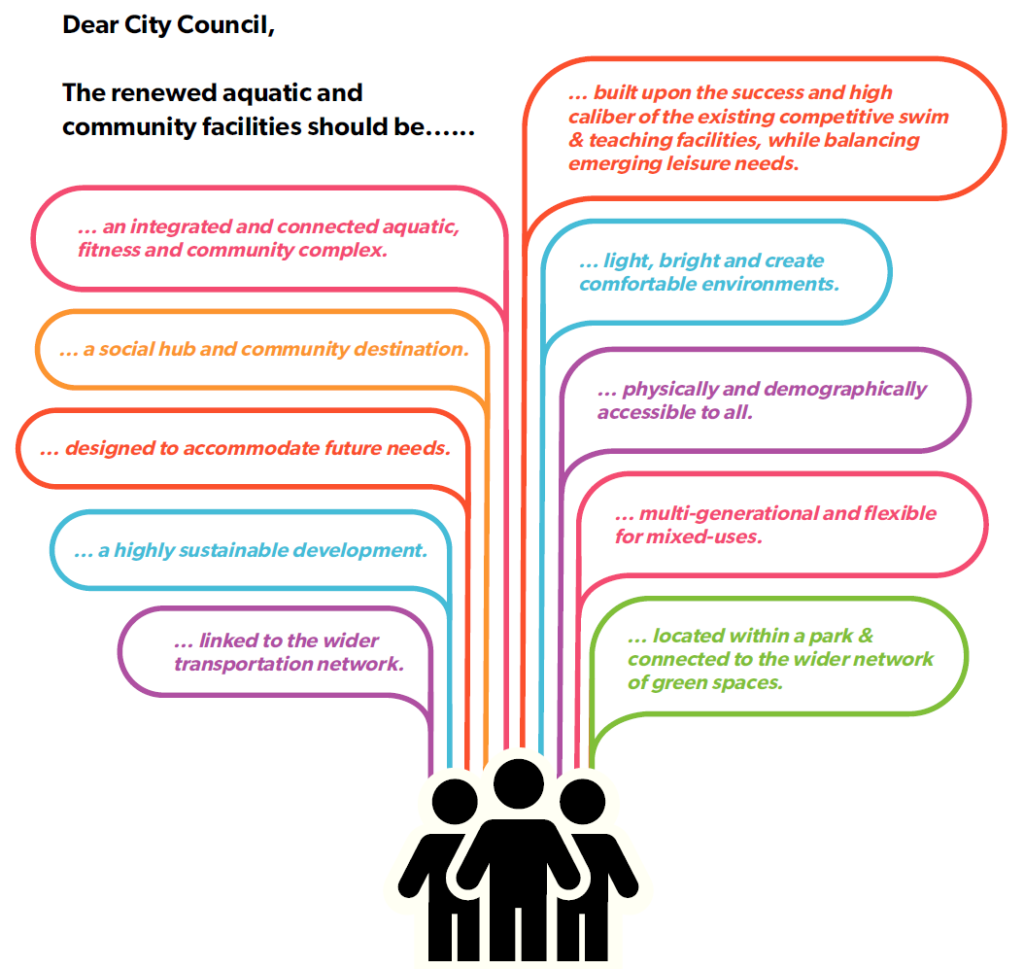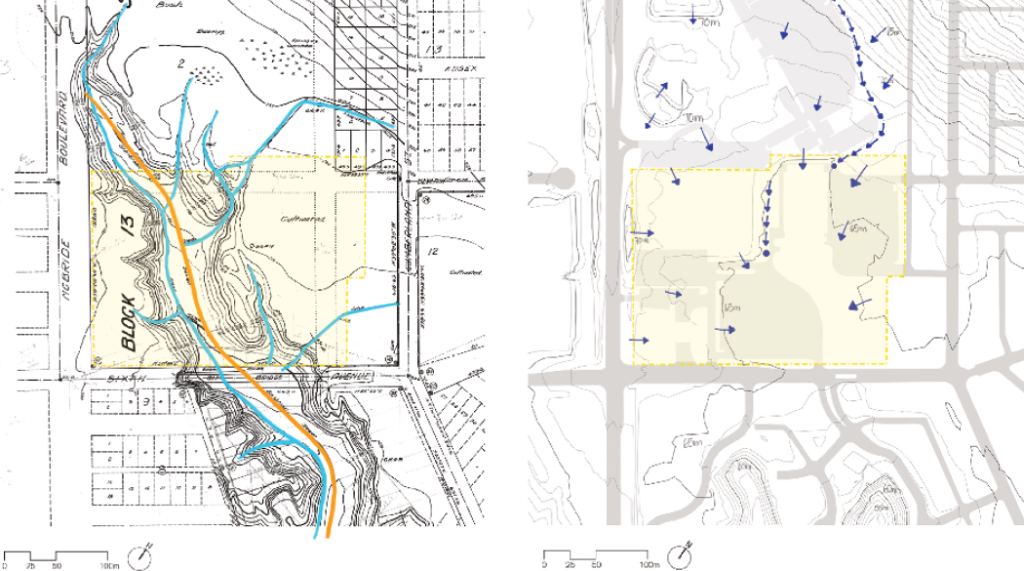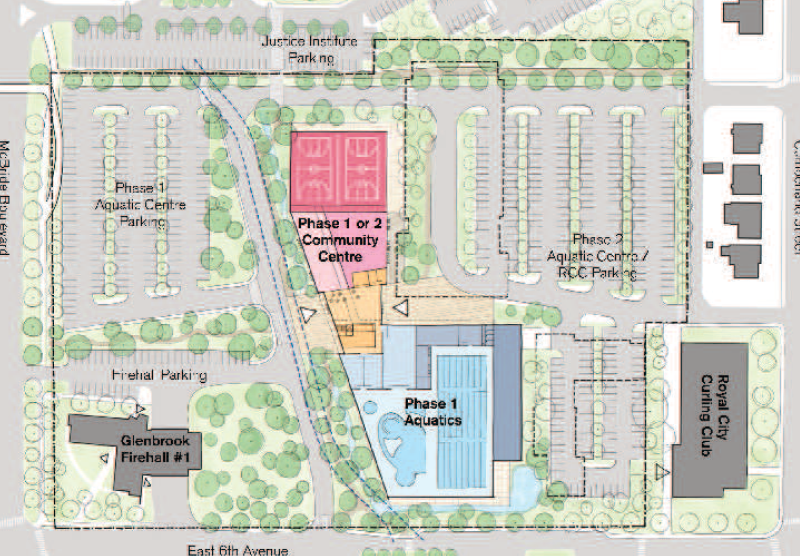It was a report-full and public-conversation-full Council Meeting this week, with a lot on the agenda, so put on a kettle of tea. We started with an open invite for the public to comment on:
Draft 2018 – 2022 Financial Plan
This is our annual budget consultation. As required by the Community Charter, our budget must be balanced over a 5-year cycle, and there are some prescriptive reporting requirements. We also provide more information in order to make the somewhat enigmatic budget figures more understandable.
I will blog more about this in the coming weeks, but the short version of the draft plan is that general revenues are projected to go up by about $5.8 Million. Of this, about $1.6 Million (28%) is from new taxes related directly to growth and $1.3 Million (22%) is related to new fees collected mostly from supporting growth (permit and engineering fees, for the most part). Add to this a proposed 2.95% tax increase that bring in an extra $2.2 Million (38%), and a new 1% Capital Levy to support our ambitious capital renewal plan which will bring in about $750K (13%) to be directed to our Capital Reserves.
Utility rates are, not surprisingly, going up mostly due to local and regional Capital investment, from water tunnels under the river to new sewer treatment plants. We are still not sure what BC Hydro will be doing with electrical rates in 2018, as the utility predicted a 3% increase and the Premier suggested he would freeze that for a year. We will need to talk about the long-term policy implications for the City of BC Hydro creating unsustainable deferment accounts – we need to maintain our capital (including some new substation needs) and need some certainty in rates to plan for that.
We had a few people present to the plan, some sharing our concern about the infrastructure gap and the need for Senior Governments to help local governments, others with more technical questions about the numbers. We also received some written correspondence on the budget. Council moved to receive the report, and staff will now work towards creating supporting Bylaws to make the Financial Plan official.
The following items were Moved on Consent
Updates to the City’s Election Bylaws
Why has no-one told me there is going to be an election this year? As God is my witness, the fountain of information coming out of the Provincial Government has been unrelenting, with new and constantly-updating financing and declaration rules. However, these Bylaw changes are simply about making sure our local election rules comply with the Provincial regulations. There will be little change here, except the dates of the early ballots will be adjusted to avoid the polls falling on the Thanksgiving weekend when many people travel.
235 Durham Street: Heritage Revitalization Agreement Amendment Bylaw No. 7975, 2018
This HRA project has been delayed by the owner for a few reasons relating to family issues. The owner does plan to proceed, but needs some more time. As these Agreements have deadlines, Council had to agree to extend the deadlines through a Bylaw.
835 Eighth Street (New Westminster Secondary School): Proposed Redevelopment of the New Westminster Secondary School
The new High School project is rolling along, but unlike the RCH project (see below) it doesn’t need any zoning approval or anything from the City. However the City does have some interest in the transportation connections, relationship to Massey Theatre, the Moody Park Arena and Mercer Stadium. So it is good to get an update on the plans as they move along.
Mostly, seeing as we have no regulatory role, I think the City’s main desire here is to stay out of the way and let the new School get built. The one issue we needed to deal with is a triangle of land that belongs to the City but the School District wants to use for crane installation and construction staging. So we are making that happen.
406 – 412 East Columbia Street: Principles for a Housing Agreement
A developer is working on a plan to build a mixed-sue building on a vacant lot in Sapperton. It will combine street retail, office space, and purpose-built secured rental housing. To secure the potential residential units as rental for the life of the building, a legal agreement will be prepared between the City and the developer. This report outlines the principles of the agreement, and now that council endorsed the principles, staff will draft a formal agreement as part of the development review process.
Bylaw Closing a Portion of Highway – 1084 Tanaka Court
A portion of land adjacent to Tanaka Court (the road one uses to get to the Lowes parking lot in Queensborough) belongs to the City, and though it is designated as part of the road, it is only really useful as part of a redevelopment of the adjacent piece of vacant land. In order for the City to sell it, we first have to “close the road”, so it is a titled lot, or can be amalgamated on to the adjacent lot. That takes a Road Closure Bylaw.
Assuming the Ministry of Transportation approves, this Bylaw will go to a public Opportunity to be Heard. Watch your local CityPage for the announcement!
Recreation Management Software Replacement Project
Parks and Recreation are ready to pull the switch on their major registration and facility management software upgrade. This is the software used for all recreation and cultural programs and facilities rentals. Naturally, this is a big shift, but staff have been working on this for a year the new provider of the software has a solid reputation with a lot of experience at this stuff. Fortunately, they are a Burnaby-based company, and there are 22 other municipalities that use the system, so we are not all on our own here.
That said, its new software, so expect a few hiccups and a bit of time on a learning curve, but hopefully registration will soon be smooth and easy like never before!
We then had a few Reports for Action
Status of 2015-2018 Strategic Initiatives – Update
This is our new practice of receiving regular reports on the progress of many of our Strategic Initiatives for the term. This time around, we heard progress reports on these three initiatives:
Library upgrades: The Library is our second most-visited facility (after the Canada Games Pool), and hasn’t seen major renovations in a few decades. The older side of the building is from the 50’s and needs some pretty significant work done on the building envelope and stricter, aside from the need to upgrade the facility to suit modern needs. Libraries are very different places in 2018 than they were in 1958, and we have not kept up with that change. So there will be (unfortunately but necessarily) disruptive work going on in the building for the next year and a half. The ongoing plan is to only deactivate portions at a time to keep as much continuity in service as possible, so please be friendly to the staff as they make the best of a bad situation. The end result will be worth it!
Economic Development: The City has taken a more proactive role in Economic Development in the last few years, and are very fortunate to have great partnerships with our Chamber of Commerce, our two “official” BIAs and three Business Area Associations. The major thrust here is through the Intelligent City initiative to promote and retain more tech-savvy businesses while continuing to support our retail and commercial areas as the population grows. This is a never-ending job, but a solid strategy and team is vital.
Environment Strategy: It is time the City did a comprehensive review of its various environmental programs and initiatives, and provide a strong framework plan to assure we are being strategic with our priorities. There was some great initial public consultation for this program in the fall, with some new ideas, some suggestions and criticisms of the City’s current programs, and visions of a more sustainable City. We expect to see a policy document some time in late spring bringing these together.
813 – 823 Carnarvon Street: Rezoning to Allow a 204 Unit Market Residential and 66 Unit Non-Market Residential Development – Bylaw for First and Second Readings,
This is a proposed development in the Downtown Tower District that combines a Market condo tower (a little shorter than the adjacent Plaza88 tower) with a smaller tower of non-market rental suites. The organization running the non-market Tower is called PAL, and they hope to run a facility similar to one they have on Coal Harbour where seniors who have worked in the arts can live in a means-tested affordable housing building attached to the market tower.
The project will be going to public consultation and eventually to Public Hearing, so I don’t want to say too much about it until the public has a chance to chew on it. However another topic came up through the discussion of the project, and that resulted in a follow-up motion from Council.
I did, however, raise a concern about the amount of parking going into a building that is immediately adjacent to a SkyTrain Station – 275 parking spots for a 270-unit building (including guest parking and some parking to support the commercial in the podium). I think we are at a time where we can start significantly reducing the parking numbers for developments like this. Underground parking is a significant cost for developers: depending on site and ground conditions, $30,000 – $50,000 per spot. Underground, they make construction much more expensive and disruptive to the community as large excavations and de-watering projects must be tolerated; above ground, they create out-of-scale buildings with terrible streetscape.
The City has a program where developers can build less than our regulated “parking minimum”, but they must pay cash in-lieu to the City based on some formula. This program dates back to 2011, and may need a revisit, as times change and we have a new Master Transportation Plan and housing affordability issues that this should directly address. During Q&A, this developer expressed concern about the cost of building four levels of parking, and was confident they could market the condos without parking spaces – it is the City and our policies that are forcing so much parking to be built across the street from a SkyTrain.
So, we are going to review these policies (though I suspect it is too late for this specific project).
813 – 823 Carnarvon Street (Affordable Housing): Principles for Housing Agreement
This report outlines the shape of a Housing agreement that would assure the second building in this development would remain non-market affordable housing for the life of the building. If the project were to be approved, these are the conditions the City would expect the developer and not-for-profit operator to stick to.
Aside from some subtlety of language around storage space allocation and a bit of a follow-up gripe about requiring parking in a supportive housing development, Council moved to support the principles in the report.
After a report from our Police Department, some awards given to a couple of outstanding officers, and some proclamations and public delegations (I blogged a bit about a few of them here, and will talk about another on in a subsequent post), we moved onto the items Removed from Consent for discussion.
Community Mural Policy
Staff and the Arts Commission worked on a policy where the City could support community-driven mural projects on City and private buildings. It looked pretty good, but Councillor Trentadue did raise an interesting issue around how the City seems to be creating a situation where people wishing to beautify their own private building may run into a bureaucracy wall when, really, outside the Sign Bylaw, we should only be interested in mural on our own property. Council moved to send it back to Committee for a little more work prior to passage.
616 – 640 Sixth Street (Market Rental): Principles for a Housing Agreement
Similar to above, this is another proposed development that has not had Council Approval, but Staff is working to put together a Housing Agreement to secure the conditions of the Purpose Built Rental part of the development. Again, aside from a few minor language changes, Council supported the principles.
330 East Columbia Street (Royal Columbian Hospital): Rezoning to Allow Renovation, Modernization and Redevelopment of Hospital Facilities
The City has some permitting to manage as the Royal Columbian Hospital redevelopment occurs over the next decade. This report gives us some idea what is coming down the pike. It also includes a report to be used by Fraser Health and their consultants to drive the public realm designs of the buildings.
From a City perspective, I am mostly concerned about how this building integrates with our traffic and pedestrian systems. If staff and visitors of the Hospital are all going to arrive and leave by cars on East Columbia Street, none of our goals for making east Columbia a vibrant Great Street are going to be realized. It will be a disaster.
Good news is that Fraser Health and City are committed to making alternatives work, including moving the main automobile ingress and egress down to Brunette Avenue, and whatever changes need to happen to Keary Street and/or Sherbrook to support this needs to be understood early. We also need to assure the pedestrian, cycling ,and bus infrastructure on East Columbia is well integrated and makes those attractive options.
Fortunately, the initial concepts look positive, and Fraser Health is talking Transportation Demand Management to help with their own parking issues, which is a huge step towards making a new, expanded hospital support East Columbia and the livability of the entire community. Exciting times ahead.
We then, as always, did our Local Government Act Prescribed Bylaws dance:
Zoning Amendment (813 – 823 Carnarvon Street) Bylaw No. 7974, 2018
As described above, this proposal to build a two-tower mixed use residential building on Carnarvon Street, including a supportive housing component, was given two readings. There will be a special Public Hearing on March 5th. C’mon out and tell us what you think!
Council Procedure Bylaw Amendment Bylaw No. 7986, 2018
Local Government Elections Procedures Bylaw No. 7985, 2018
Automated Voting Machines Authorization Amendment Bylaw No. 7994, 2018
These three Bylaws to adjust our Council schedule, make some necessary changes to our Elections Bylaw to meet the new Provincial laws, and to authorize the voting machines for the 2018 Local Government Elections were given three readings.
Heritage Revitalization Agreement (235 Durham Street) Amendment Bylaw No. 7975, 2018
As described above, this Bylaw to facilitate a request for a time extension for a homeowner to do their heritage restoration work was given three readings.
Tanaka Court Road Closure Bylaw No. 7991, 2018
As described above, this Bylaw to close an unused portion of the Tanaka Court right-of-way was given three readings. There will be an Opportunity to be Heard scheduled once the Ministry of Transportation and Infrastructure is given us the green light.
Corporate Record Management Bylaw No. 7987, 2018
As discussed last meeting, this update to our procedures for record retention, destruction, and transmission to our permanent archive was Adopted. It is now the Law of the Land. It should be fun seeing what comes out of the deep file search of some of our very old Bylaws and they are transferred to digital.
Zoning Amendment Bylaw No. 7953, 2018: Passive Design Incentives for Single Detached Zones
As discussed last meeting, this Zoning Bylaw amendment that will provide modest incentives for the building of more energy efficient homes in the community was Adopted. It is now the Law of the Land. Adjust your thermostats appropriately.
We then had some New business</> coming out of last week’s notices of motion:
Motion on Notice, Umbrella Cooperative
This is a not-for-profit operating a community health clinic in New Westminster specifically developed to support people with language or cultural barriers to public services. They could use a little help and the City is formally asking the Province ot help them out, and to provide for more of this type of service to our new residents.
Motion on Notice, First Nations Representatives on Committees
The City is working on a diversity mandate for Council Advisory Committees, and I think it is important that First Nations representatives (be they from local or regional First Nations, or people who live in our community and have lived the Indigenous experience, regardless of their tradition territory) is an important part of that. We will make sure there is a mechanism in place for next Committee Recruiting season to make this happen.
Happy Family day everyone. Pop by the Anvil Centre, as there will be many things happening!
